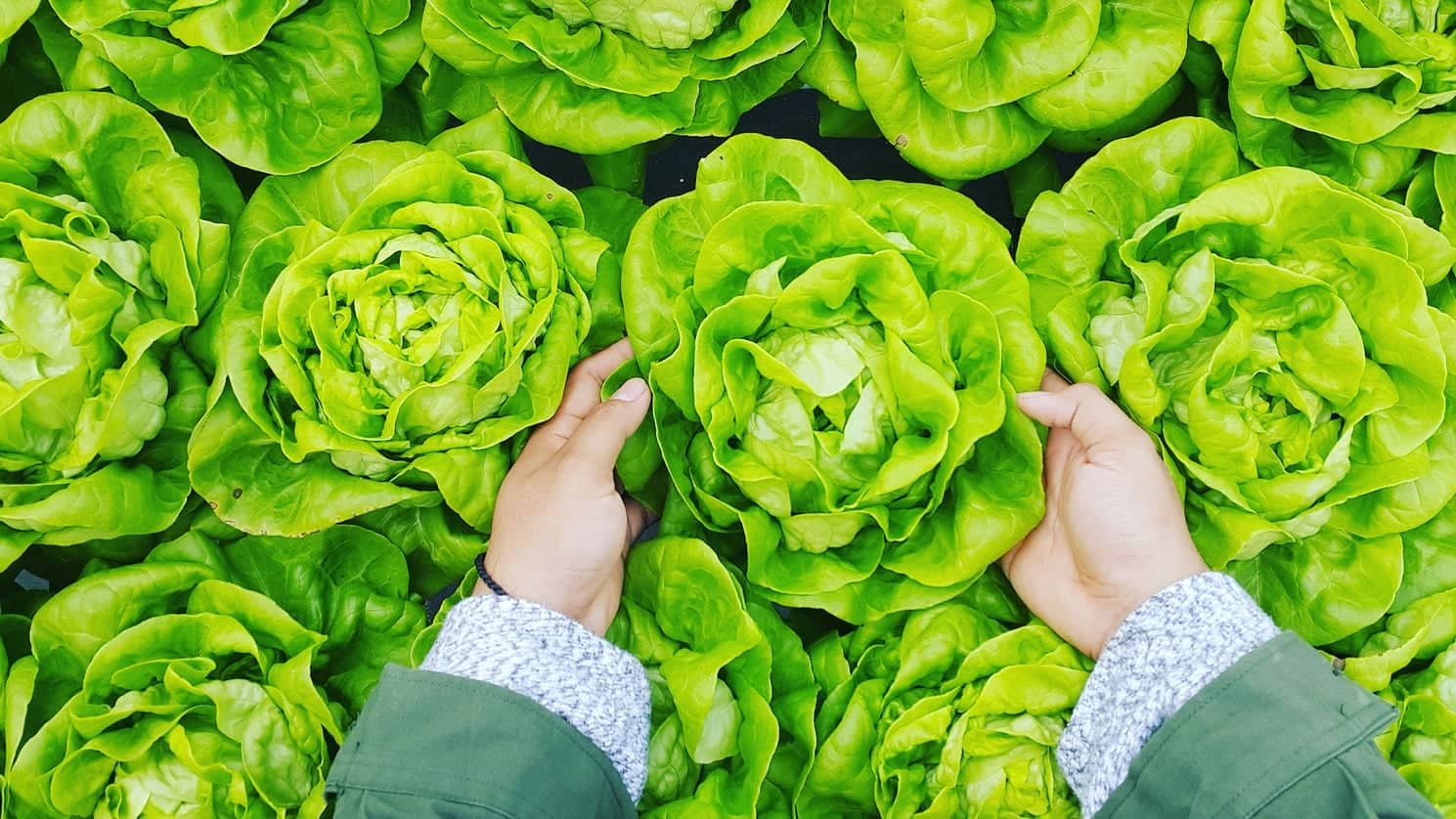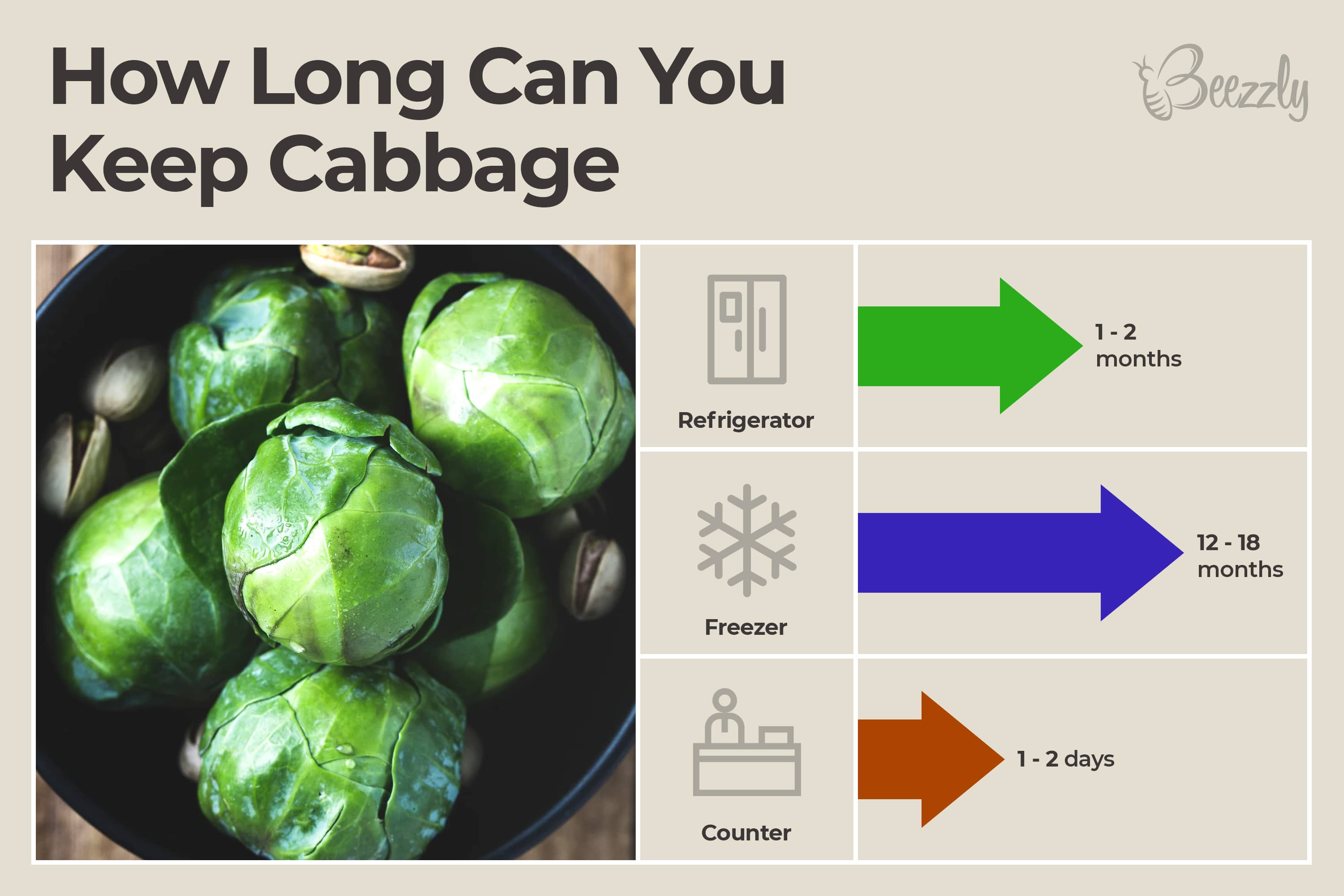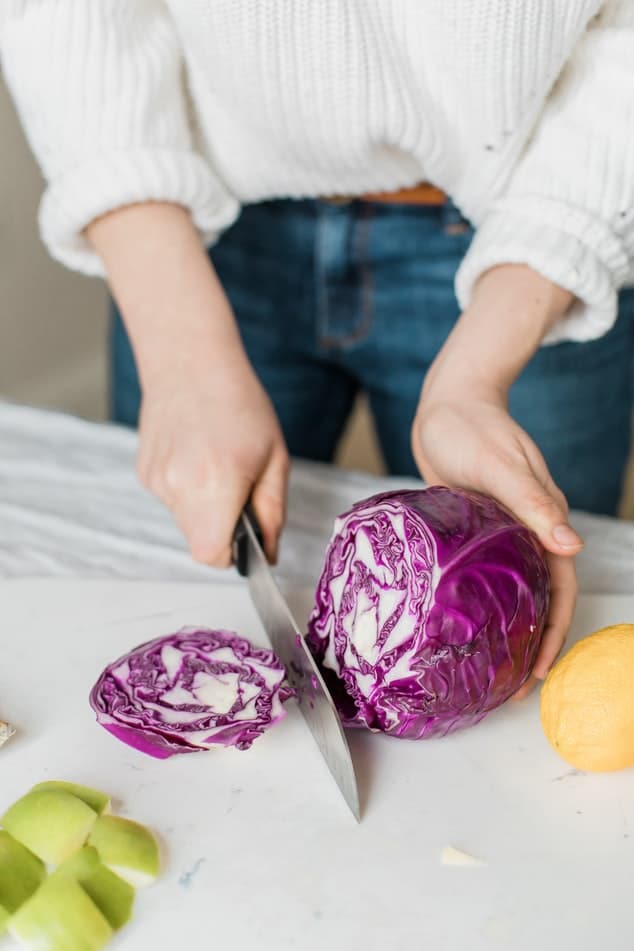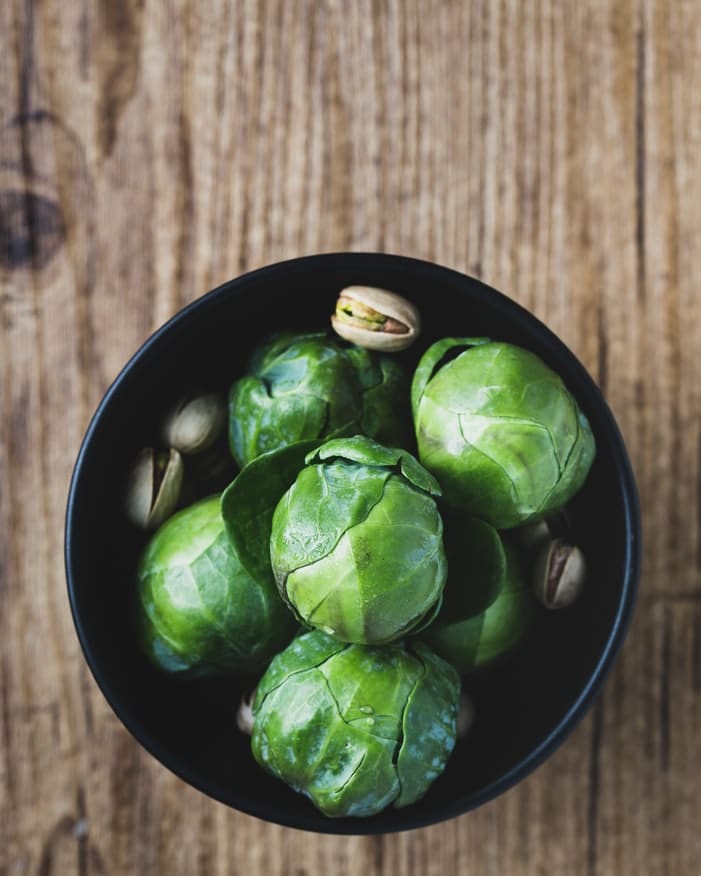How to Tell If Cabbage Is Bad?
People are used to thinking that cabbage is one of those leafy veggies that are able to stay consumable for a pretty long period of time unlike other, more sensitive variations like lettuce.
However, even this veg has a certain term of use and it can get spoiled. Moreover, many various sorts of it exist, and some of them are more tender (and less durable) than others which must be considered.
So, how to tell if cabbage is bad? The cabbage is bad if you see the soft texture, brown, yellow, or grey spots, the cabbage leaves are wilted and smell unpleasant. The shelf-life of the cabbage lasts up from 3 weeks up to 2 months at +32 °F in the ventilated package in the fridge. Don’t store the cabbage in a closed plastic bag.
To make it clear how to define spoiled cabbage and learn more about the shelf life of cabbage, we prepared this article for you.
What Makes Cabbage Our Staple?
Let’s consider the fact: unless you hate this veggie or you can’t consume it for some medical reasons, cabbage can be found in almost any fridge. It is crispy, juicy enough, and has such a nice fresh aroma that we willingly add to both to the cooked and raw foodstuffs. Whether we are talking about soups, stews, or salads, it can be incorporated into almost any dish!
Moreover, this all-natural foodstuff is loaded with tons of beneficial elements that make sense of eating it daily:
- Cabbage is rich in B vitamins, B1, B2, B6, B12 in particular
- It is a good source of vitamins K and C
- Fiber is another element that we receive from these crispy leaves
- Regular consumption of cabbage improves our digestion
- It brings the cholesterol down and keeps our blood pressure well-balanced that makes this veggie super-beneficial stuff for the heart
No wonder people tend to buy it in bulk, especially considering that cabbage is harvested only once a year. Nevertheless, having an excessive amount of it stocked, somebody would probably ask: how to make it stay fresh longer?
Does Cabbage Need to Be Refrigerated? Cabbage Keeping Suggestions.
Even though cabbage is not so easy to get ruined, it still needs proper conditions to be able to stay consumable and fresh. The better we take care of it the longer we will be able to enjoy it and all the goodness it provides.
To do everything right, just keep in mind the basic rules:
- Never get it bruised. When being damaged, cabbage will spoil faster
- Stock the veggie in a crisper drawer in the fridge. The cold will extend its lifespan significantly
- This leafy veggie needs no covering or tank to keep it. However, consider that cabbage is best to be stored unwashed
- For preserving it, freeze the leaves, but remember to blanch them for saving the better quality

How long can raw cabbage sit out? Well, if it was already washed and/or chopped, don’t expect it to stay fine for more than two hours.
How Long Does Cabbage Last?
Cabbage, even though being a leafy veggie, is way less sensitive and fragile than its “relatives” like lettuce or spinach, for instance. All because it has lower water content in the leaves which makes it more durable and long-lasting.

This is the reason why we can keep it safe longer if, of course, all the conditions are provided.
Of course, when being left out unchilled, cabbage will not have a long shelf life: three days is the maximum term, and if it ends up in a humid or hot surrounding, this period will become even shorter.
Well, how long does cabbage last? Cabbage lasts up for about 1-5 months at 41 °F room temperature if stored properly. For longer-term storage, remove rotten leaves, wrap the cabbage with cling film, and put it in a cool place, at 85-90% humidity. Cabbage shelf-life without a film is not more than 1 day.
How long does cabbage last in the fridge?
Cabbage lasts for two months and eighteen months respectively!
Well, the miracles begin when we remove it to the chilled spaces like the fridge or freezer since cold makes cabbage last for two months and eighteen months respectively!
One more nuance to keep in mind is that whole raw veggie has a way longer period of storage compared to shredded or especially cooked variants.
And how long does cabbage last in the fridge? Cabbage lasts up for about 20 to 30 days at 38,6 °F in the fridge if stored properly. For longer-term storage, wrap Cabbage with cling film and keep it in the fridge, in vegetable boxes. Store Cabbage in a cool place, not above 3-4 days at 60 °F room temperature.

How long does chopped cabbage last?
Nearly two hours
[table id=74 /]
Chopped cabbage can be stored for up to 3 days at 38,6 °F in the fridge in a plastic bag, not above 1 day at 60 – 68 °F at room temperature. Don’t freeze chopped cabbage, it will lose water during defrosting, and you can only use it for smoothies.
Naturally, somebody might wonder whether different sorts of this veggie happen to have a different lifespan. Well, generally, cabbage lasts relatively the same long time, however, some kinds of it may indeed have certain distinctions:
How long does napa cabbage last?
Napa cabbage lasts up to 2 weeks at 38,6 °F in a plastic container, a head of cabbage covered with a cling film will last for about 2 weeks in the fridge. Once cut, use the cabbage within 2-3 days. Store Napa cabbage in a cool place, not above 1-3 days at 60 °F at room temperature.
If we keep a whole, raw, and unwashed head of napa cabbage refrigerated and covered with a cling film, it will stay good for seven days or even longer.
How long does cooked cabbage last?
Cooked cabbage lasts up to 2 hours at 60 °F after cooking and should be used within 3-5 days. If the cabbage is a part of the mixed dish, store it in the fridge at 38,6 °F, and use it within 3-4 days. To maximize the shelf life of cooked cabbage freeze the cabbage in airtight containers.
Properly packaged, cooked foodstuff will remain edible from three to five days when refrigerated. If we decide to preserve it in a frosting camera, the lifespan will increase to almost one year.
How to Tell If Cabbage Is Bad?

Does cabbage go bad? This question bothers many people who use this veggie frequently. Unfortunately, like any other foodstuff, raw or cooked, cabbage is prone to spoilage, and if you sense that the raw cabbage smells bad, its life has come to an end.
To keep it crisp longer, check the veggie for the following signs of a bad cabbage:
- shriveled leaves
- yellow, grey, or brown color appears
- bad odor
- soft texture
- traces of mold or fungus
These can be the symptoms of spoilage because of the improper conditions, but also the reason can be simpler: you probably have an old cabbage and that’s all.
Anyway, toss such veggie away.
How to Tell If Shredded Cabbage Is Bad?
With shredded leaves, it might be somewhat more tricky since they are already soft. However, the best way to define that something went wrong is to examine the color.
If not stocked well, cut cabbage will turn grey pretty soon. Of course, if it was kept for a while, some nasty smell may appear, as well.
Freezing As a Method Of Storage
When we need to keep some foodstuff edible and of the optimal quality longer, the best-working method is to toss it into the frosting camera.
Frost is a universal way of preserving the goodies, both raw and cooked, and it will definitely work for the cabbage, too.
And even though we will have to go through the procedure of blanching first to make the veggie more frost-resistant, it is worth doing.
Before we begin, consider several handy tips that will make the process effective:
- Go for a vacuum sealer to leave no air in the tank. It will prevent any freezer burns
- Place the leaves in the ice bath for the same period of time as you spent on blanching
- Soak the leaves in cold water for 20-30 minutes. Like this, you will expel all the worms and grit
- The simplest method of freezing it is to have it in wedges, but shreds (or leaves) can also be preserved
The procedure of preparation for freezing is rather simple.
- Wash the head of the cabbage thoroughly. The core can be left or tossed away, it hangs upon your choice
- Cut it hanging upon how it is supposed to be used later
- Blanch the leaves or shreds in a pot for 1.5 to three minutes at most, and instantly remove them to the icy bath. Remember to chill the leaves in there for the same period of time!
- Any excess moisture must be drained completely, otherwise, the leaves will get freezer-burnt
- Spread them evenly in one layer over the baking sheet
- Slide that tray into the frosting camera for several hours until the leaves are frosted
- Now it is time to transfer the goodie into the package, label it with the date of freezing, and toss into the frosting camera
Amazing Facts About Cabbage

This leafy veggie is not only beneficial and easy to keep it is also a curious thing to explore! We offer you several awesome facts about it that, we bet, quite few of us knew before:
- Cabbage is an ancient thing. It has been cultivated for more than six thousand years! Its homeland is China where this veggie first appeared around 4000 B.C.
- It is a boldness cure. Yes! Ancient people believed cabbage can bring back their hair! And even though no evidence were found to prove that statement, we do know it is filled with nutrients.
- Cabbage can be called a beauty promoter. When consuming it regularly, we will have stronger and healthier locks, nails, and skin. Isn’t that what every girl is looking for?
- It fights cancer back so we should definitely include these crispy leaves into our daily meals.
- High in fiber and low in calories, cabbage can become your new favorite and healthy snack.
- By drinking raw cabbage juice daily, we can forget about headaches forever. By the way, a compress of crushed leaves will also work.
- Red sort of this veggie can be utilized as a natural food or fabric dye.
Now you know how to make this healthy veggie keep its freshness, and what to do if cabbage smells bad. It is not difficult to stock it, so we hope this brief guide will be handy for everyone who enjoys this leafy goodie.
[wp-faq-schema title=”Frequently Asked Questions”]

I recently spotted some black things on my cabbage head. Is black stuff on cabbage mold?
It can be mold but these spots can also appear during the growth period. Anyway, cut off the damaged leaves and discard them. If the rest of the head is OK, then it can be eaten.
How do you know if cabbage is good? What to pay attention to when picking it in a store?
Hi! I’d recommmend touching it. If it’s firm and crispy, it’s OK. Also, it must have no dark leaves, black dots on them, or slimy/moldy traces. Beaten or bruised leaves are also not good.
My kid often womits after eating raw cabbage (the veggie is properly washed, of course). Can cabbage make you throw up?
I’m not sure but I did hear that, if the cabbage has chemicals in it, it can cause womiting. Try to buy organic stuff.
How do you store cabbage without refrigeration? Is it possible at all?
I only know it can sit out for 2-3 days if it is raw, not washed, and uncut. A shady and cool pantry is the best place for that. But it’s best stored chilled anyway.
Is Cabbage better raw or cooked? In which state is it healthier?
Of course, raw will keep more vitamins than cooked. I eat it only raw but that’s because I hate cooked cabbage, no matter boiled or fried.
I really thank you for the valuable info on this great subject and look forward to more great posts. Thanks a lot for enjoying this beauty article with me. I am appreciating it very much! Looking forward to another great article. Good luck to the author! All the best!